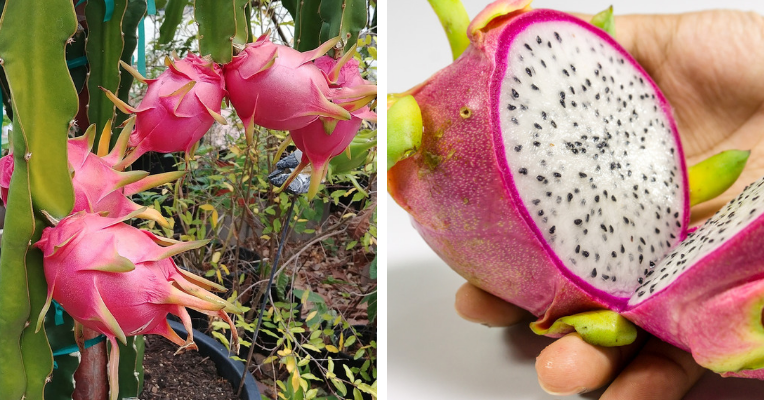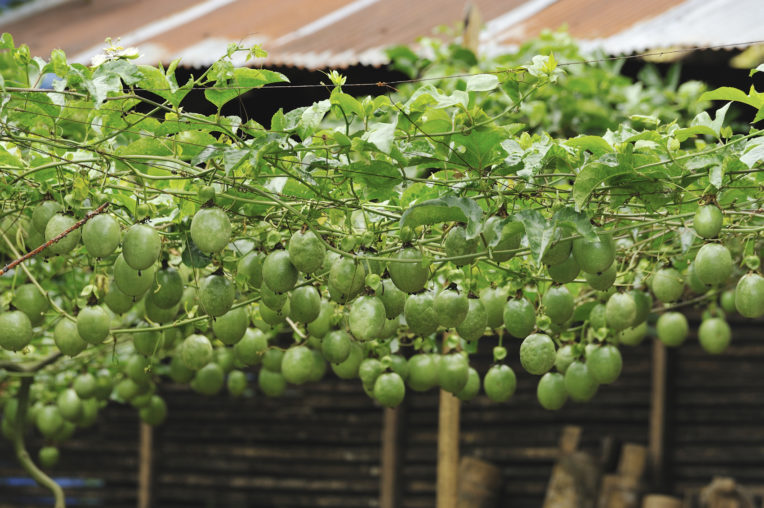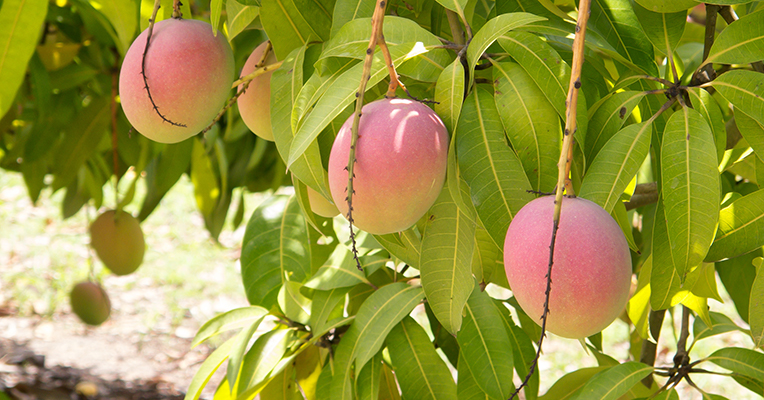Growing tropical fruit in Sydney: our 5 top tips
There's nothing better in summer than fresh, juicy tropical fruit - especially if you've grown it yourself! No, you don't have to be a commercial grower on a beautiful Queensland plantation to reap a great harvest. It is definitely possible for you to grow your own tropical fruit, even in less-than-tropical Sydney. Here are our five top tips.
Influence your growing conditions and choose the right fruits
To get the best growth out of any tropical fruit, consider making a few changes to your garden. Your conditions might not be perfect, but in a lot of cases it's possible to make them work for you with careful planning and a few adjustments.
Soil is one thing that you can almost always improve. Try adding organic matter like manure, compost, mulch or fertiliser. If your soil is particularly heavy and clay-based, rasing your garden bed will improve the soil and help your plants establish.
Tropical fruits generally need full sun to produce the best growth and harvests, so you may have to be creative. Search for areas on your property - perhaps against a wall, or behind a garden shed - that get plenty of sun and are protected from both wind and frost. If the area is small, paved or otherwise hostile to in-ground planting, that's perfectly fine - you can grow dwarf varieties in containers and still harvest an excellent bounty of delectable tropical fruits.
If you have the space, a glasshouse is also an excellent addition to your garden that will not only allow your tropical fruits to thrive, but will also allow you to grow different humidity-loving flower varieties, too.
Of course, given that Sydney is not a tropical climate, there are some tropical fruits that simply will not thrive no matter how hard you work to influence your conditions. This is why plant choice is also key - stick with varieties including mangoes, guavas, passionfruit (for tips specific to passionfruit, click here), paw paw, dragon fruit and macadamia (yes, macadamia nuts are a fruit!) which are more adaptable, tolerant and likely to thrive in Sydney.
Maintain your trees
It's important to remember that tropical fruit trees are not ideal for set-and-forget gardeners. Regular upkeep is key to keeping your plants healthy and ensuring a great harvest when they eventually do start fruiting. Regular watering - a deep soaking once or twice weekly, aimed at and around the root zone - is very important, particularly if you have quick-draining, sandy soil. It's also very important during summer. When watering your plants, avoid wetting the foliage, as this can lead to fungal diseases.
To help keep soil cool and moist, and also to help prevent weeds from establishing, generously apply organic mulch around your trees' root zone. Once the mulch breaks down, it'll help improve your soil, too!
Fertilising is another essential for tropical fruit trees, but not all fertilisers are created equal. Your tropical fruit trees will require a specialised fruit tree fertiliser. Small doses every 6 weeks or so are ideal to encourage growth and fruiting. As with any fertiliser, it is important to follow package directions - overfertilising your plant can cause irreparable damage. Always water your fertiliser in well - coordinate your schedule so that you always fertilise on a watering day to maixmise efficiency.

From left: Dragon fruit ready for picking; a dragon fruit halved to show the edible flesh and seeds.
Protect from pests and wildlife
We humans aren't the only ones who find tropical fruits irresistible. Once your trees begin to fruit, put a protective net over them to prevent possums, flying foxes and birds from feasting on them. Any netting you use should be wildlife-friendly, with a mesh size of 5mm or less, and you should check your nets regularly to ensure that no wildlife has been trapped. Remove nets once fruiting has ceased. Additionally, fruit flies can be a problem with tropical fruits. Keep them away from your precious harvest by using fruit fly bait. This is a liquid you can paint onto the trunks of your trees or on nearby stakes in the garden.
If you find fallen fruit on the ground, this is a sign of potential disease and insect pests - and further, it can actually attract more pests! Gather dropped fruits into a plastic bag, seal it and stew them in the sun for a few days to kill the pests and prevent reinfestation, then dispose of them in a garbage bin. Never compost diseased fruit.
For more info on year-round fruit tree care, see this article.

The distinctively-scented guava is another tropical treat you can comfortably grow in your Sydney garden.
Pollination is key
In order for your trees to produce fruit, pollination needs to occur - and that means you need pollinators. Pollinators can include insects such as bees, moths and butterflies, birds and even bats. While these creatures don't come to your garden for the specific purpose of pollination, it is a handy side-effect of their search for nectar, as grains of pollen attach themselves to their bodies and get transferred from flower to flower.
Additionally, while many plants are self-pollinating and can produce fruit in isolation, some simply will not produce fruit unless they are cross-pollinated with a different variety of the same fruit, or the opposite sex of the same variety. This means that you may need multiple plants growing relatively closely together and flowering simultaneously in order to get fruit. See our pollination chart here for an in-depth explanation - and, of course, chat to one of our qualified horticulturalists in-store to ensure you're picking the right plants to bear a harvest.
There are a few things you can do to attract pollinators to your garden. First, plant plenty of nectar-rich flowers alongside your fruit trees, as this is what they come looking for. Try natives, such as grevillea, kangaroo paw or bottlebrush for a beautiful garden that will attract plenty of pollinators. It's thought that bees, in particular, find blue flowers highly attractive. Provide plenty of water (shallow bird baths are a great idea - fill them with pebbles for bees) and shelter through both hot and cold weather, and avoid using pesticides or insecticides that are harmful to bees (always check the label). Follow these steps and you should have plenty of helpful pollinators populating your garden!

A crop of passionfruit ripening on a vine. Mature fruit is distinguished by its black or deep purple skin.
Be patient
Rome wasn't built in a day - and just as patience is important when building a city, it's also key when waiting on fruit. Your trees will need to reach maturity before they bear fruit, so don't expect a harvest too soon after planting. Growing fruit, especially tropical fruit, is a long game, and you may need to wait several years before even a small harvest is available. The wait may be unbearable to start with, but once your trees bear fruit, we promise it'll be worth it! In the meantime, you'll get to enjoy a garden filled with stunning ornamental trees.
Looking for more general advice on growing fruit? Click here for general fruit tree care through the seasons,
Have you ever tried growing tropical fruit in your backyard? Share your results with us in the comments below!


